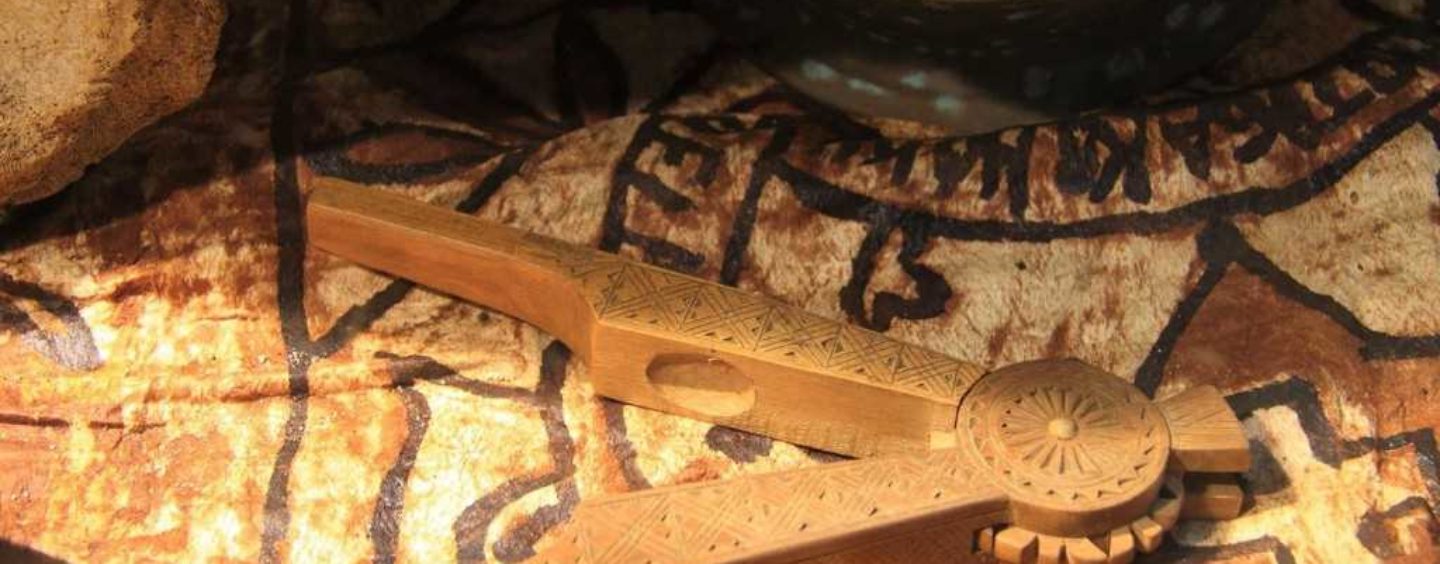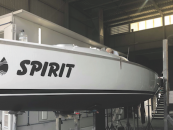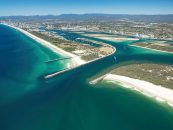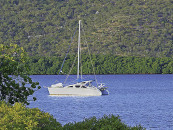Just a stone’s throw south of the NSW border lie the Chinderah Bay Antiques & Seafaring Museum and its treasure trove of historical nautical items. Its passionate owner and founder, Ray Evans, is committed to the preservation of Australia’s maritime heritage, and to the discovery of the most unique artefacts.
Personal and family passion
Born out of his early days of “messing about boats” in his grandfather’s wooden skiffs, like the wise Water Rat of Kenneth Grahame’s charming Wind in the Willows, Ray’s passion for the sea first blossomed as an antiques shop. Over 30 years later, the antiques section is still thriving, and his enthusiasm for all things nautical has branched out into a fascinating one-of-a-kind museum hosting thousands of items, some several centuries old, ranging from ships’ taffrail logs and telegraphs, to bellarmines and shipping lines’ crockery.
“I’m always looking for rare things,” he says, adding that he never sources any memorabilia over the internet, preferring the relative safety and personal contact offered by private transactions.
The museum’s stunning location, right on the banks of the Tweed River and within the heart of what was once a busy shipping precinct, almost cost its founder dearly when the floods rolled in back in March 2017. “We had over an inch of water in the front of the shop,” deplores Ray, whose exceptional collection luckily escaped unscathed.
Local, regional and global maritime history
The museum’s display is a vivid witness to the historical and economic importance of regional maritime trade. The collection includes rare items, such as tooth money originally used in Papua New Guinea, and a mesmerizing navigational map from the Torres Straits Islands made of seashells and twigs. The impressive collection of ceremonial masks and shields from Papua New Guinea’s highland tribes is also worth a special mention.
A number of personal items once belonging to Queen Sālote Tupou III, including a sextant and an intricately hand-carved wooden betel nut cracker, were donated to the museum by “the friendly Islands of Tonga”, illustrating Australia’s cordial diplomatic exchanges with neighbouring island nations.
Ray’s enthusiasm for Australia’s unique maritime history also extends to some of its more controversial periods, as his beloved collection of whaling harpoons and his exquisite scrimshaw display attest. “Before environmental and animal welfare concerns, Australia was a whaling nation. That is also part of our history,” he explains.
Ray’s collection also includes objects of not only national but also of international historical significance, such as charts originally owned by Captain Cook himself, and a ship captain’s hat in its original hard case once worn by the (in)famous Captain Bligh. He also has several other items recovered from Pitcairn Island’s Bounty Bay, where the eponymous ship was burnt by the mutineers in 1790.
The museum is also home to some rather uncommon items, like a genuine pirate sword engraved with its original owner’s initials and dating back to the late 1700s. Ray has established a reputation for being able to source the most unusual pieces, which has seen him leasing out props to some 180 movies and 150 TV shows so far, some as well-known as “I’m a Celebrity”, “Get me Out of Here” and “H2O:Just Add Water”.
But not everything in the museum is as authentic as it seems, and you will be hard pressed to tell that the eye-catching giant clam shells and the towering figureheads in the front of the shop are actually fibreglass replicas used as props in several well-known movies such as “Dead Calm”.
Personal favourites
Of his own admission, Ray finds it impossible to name a favourite item in his collection. “It’s like trying to pick your favourite child,” he says. Some of his most cherished finds include oars from the wooden canoes of the MV Krait, used by the Australian navy to sink several Japanese ships in the port of Singapore in WWII, and a spare anchor from the Coolangatta, shipwrecked near Point Danger in a cyclone in 1846 and which went on to lend her name to the nearby creek, and later a township.
The sign by the front door doesn’t lie – cross the threshold and you will enter an Aladdin’s cave “full of mystery, nostalgia and treasure”; an encounter with its devoted custodian will make your visit truly unforgettable.
By Celine Flamain
More information can be found on Facebook @ Chinderah Bay Antiques and Museum of the Sea.
——————–
VIEW GALLERY OF PHOTOS HERE.



























